Nepal's glacial lakes are breathtaking, high-altitude reservoirs of water created by the melting of Himalayan glaciers. Trekkers, ecologists, and researchers are drawn to these lakes, which include Tilicho Lake, Gokyo Lakes, Tsho Rolpa Lake Nepal, and Imja Tsho glacier lake. Numerous of Nepal's most stunning glacial lakes can be found along well-known trekking routes, including the Panch Pokhari, Gokyo Lakes, and Tilicho Lake treks. Major tourist destinations including Shey Phoksundo Lake and Rara Lake, two of Nepal's largest glacial lakes. Conservation efforts are essential since the effects of climate change on Nepal's lakes have raised the country's danger of GLOF. These Nepalese Himalayan glacier lakes are must-see locations because of their stunning scenery and cultural value.
Druk Holidays combines professional-guided treks with first-rate services to provide the most remarkable experiences for exploring Nepal's glacial lakes. Our customised itineraries ensure a safe and engaging experience by covering the top glacial lakes in Nepal, such as the Tilicho Lake, Gokyo Lakes, Tsho Rolpa Lake, and Panch Pokhari treks. We offer the best trekking experiences to see Nepal's most stunning lakes thanks to our skilled guides, easy logistics, and in-depth knowledge of the country's Himalayan glacier lakes. We emphasise careful travel while visiting Nepal's major glacial lakes, since climate change raises the country's GLOF hazards. For the most fulfilling Nepal glacier lake trekking experience, pick Druk Holidays.
Tilicho Lake (4,919m)
Tilicho Lake is one of the highest glacial lakes in Nepal, located at an elevation of 4,919 meters in the Annapurna region. Known for its mesmerizing blue waters and the surrounding towering peaks, this sacred lake is a sought-after destination for trekkers and adventure seekers. The Tilicho Lake trekking route is a highlight of the Annapurna Circuit, offering a challenging yet rewarding journey through stunning landscapes.
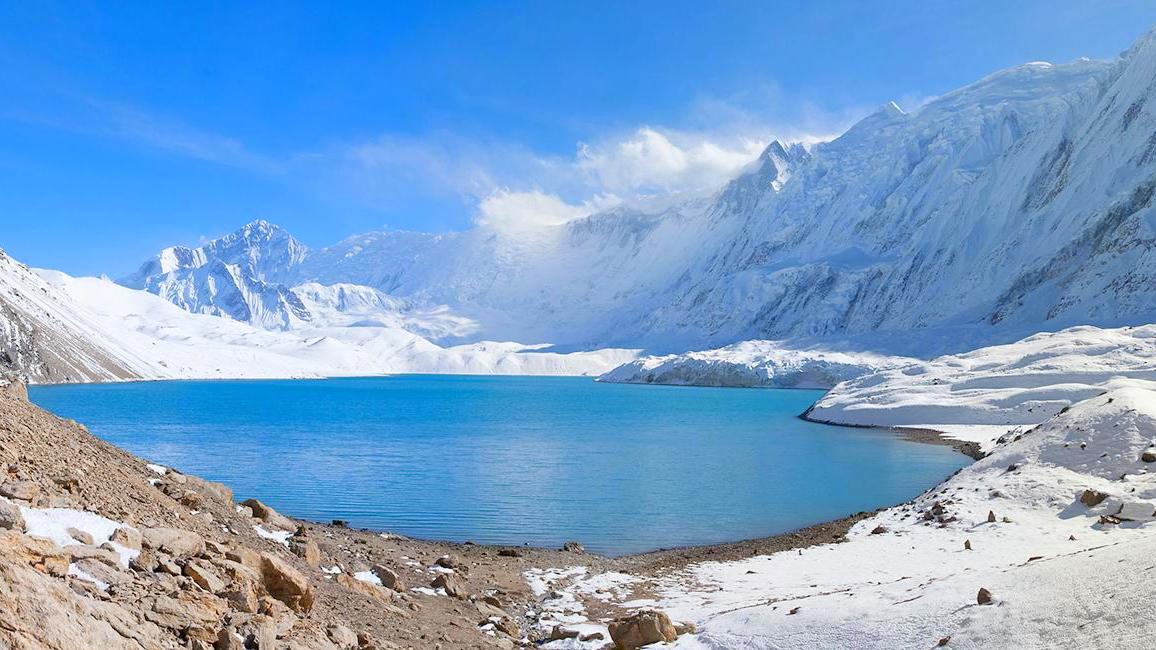
- High Altitude: Tilicho Lake is situated at 4,919m, making it one of the highest glacial lakes in Nepal.
- Scenic Trek: The Tilicho Lake trekking route is famous for its breathtaking views of the Annapurna massif, Gangapurna, and Dhaulagiri peaks.
- Crystal-Clear Waters: The lake is known for its striking turquoise blue waters, which are fed by the surrounding glaciers.
- Sacred Site: Tilicho Lake is considered a sacred site for both Hindus and Buddhists, attracting pilgrims alongside trekkers.
- Annapurna Circuit Detour: The trek to Tilicho Lake is a detour from the popular Annapurna Circuit, offering an extra adventure.
- Challenging Trek: The route is strenuous, making it suitable for experienced trekkers looking for a challenging experience.
- Stunning Views: Along the trek, you can enjoy panoramic views of the surrounding peaks, including Mt. Annapurna, Gangapurna, and Tilicho Peak.
- Seasonal Treks: The best time to visit Tilicho Lake is during the spring and autumn seasons, avoiding the extreme cold and snow of winter.
- Flora and Fauna: The surrounding area is rich in biodiversity, offering glimpses of alpine flora and fauna like blue sheep and Himalayan tahr.
- Remote and Peaceful: Due to its remote location, the lake is far less crowded than other trekking destinations in Nepal, providing a peaceful and serene atmosphere.
Tilicho Lake offers a once-in-a-lifetime experience for trekkers seeking a high-altitude adventure in the Annapurna region. With its stunning landscape, spiritual significance, and challenging trek, this glacial lake is a must-visit for anyone exploring the best of Nepal’s natural wonders. Whether you're a seasoned trekker or a nature enthusiast, Tilicho Lake trekking is an unforgettable journey to one of the most beautiful lakes in Nepal.
Gokyo Lakes (4,700-5,000m)
The Gokyo Lakes, located in the Everest region of Nepal, are a series of stunning high-altitude lakes ranging from 4,700m to 5,000m. These lakes, nestled in the heart of the Sagarmatha National Park, offer trekkers breathtaking views of some of the world’s highest peaks, including Mt. Everest. The Gokyo Lakes trek is one of the most popular trekking routes in Nepal, known for its beautiful landscapes, clear blue lakes, and the iconic Gokyo Ri viewpoint Everest, which provides one of the most panoramic views of the Himalayas.
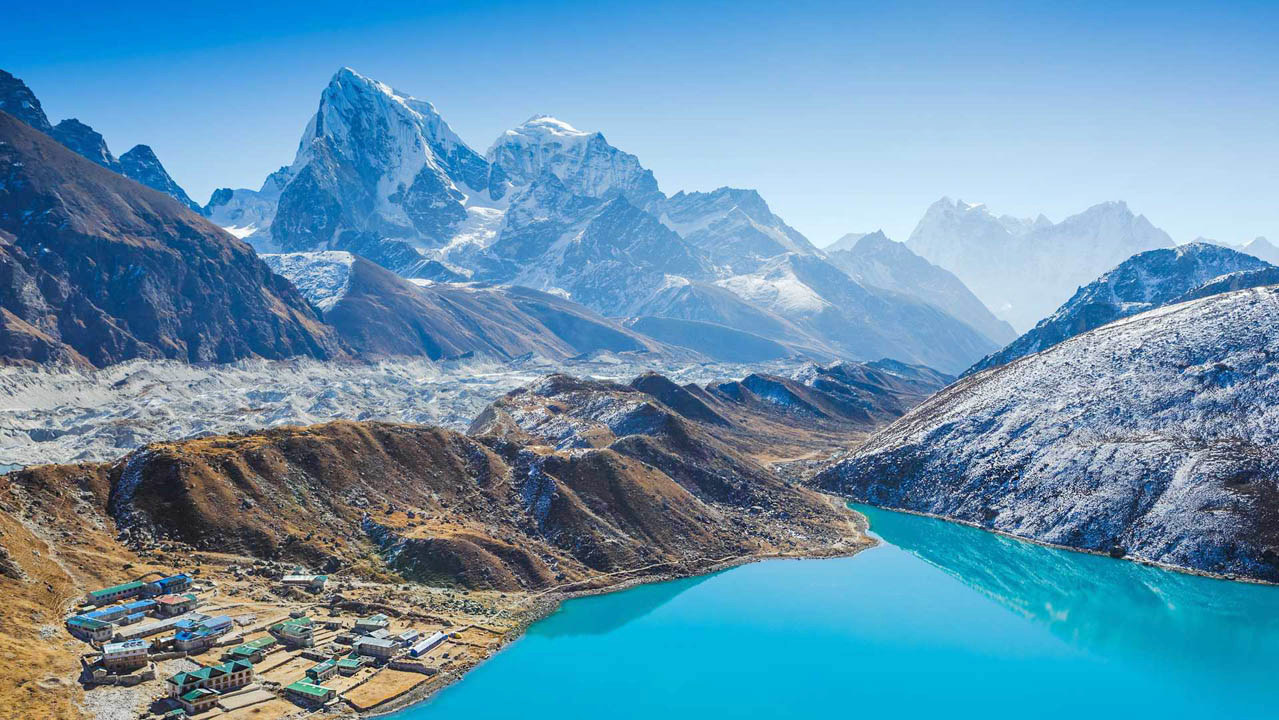
- High Altitude: The Gokyo Lakes range from 4,700m to 5,000m, making them some of the highest glacial lakes in the world.
- Gokyo Ri Viewpoint Everest: The Gokyo Ri viewpoint offers one of the best views of Mt. Everest, along with panoramic views of Makalu, Cho Oyu, and Lhotse.
- Gokyo Lakes Trek: The Gokyo Lakes trek is a well-known route, famous for its breathtaking natural beauty and challenging terrain.
- Six Glacial Lakes: There are six main lakes, with Gokyo Lake being the largest and most famous. The deep blue waters are fed by the surrounding glaciers.
- Stunning Mountain Views: The trek to Gokyo Lakes offers spectacular views of Everest, Makalu, Lhotse, Nuptse, and Cho Oyu, making it a favorite among adventure photographers.
- Sacred Lakes: The lakes are considered sacred by the local Sherpa people, and many trekkers visit to pay homage to the sacred waters.
- Gokyo Village: The trek passes through the charming Gokyo village, a high-altitude settlement where trekkers can experience Sherpa culture and hospitality.
- Gokyo Glacier: The Gokyo Glacier is an awe-inspiring sight, and trekkers have the opportunity to walk alongside this massive ice flow during their trek.
- Varied Terrain: The trekking route features diverse landscapes, from lush forests and alpine meadows to barren, glacial terrains.
The Gokyo Lakes offer an unforgettable experience for trekkers looFACEking for a unique adventure in the Everest region. With its pristine glacial lakes, dramatic mountain views, and the famous Gokyo Ri viewpoint Everest, the Gokyo Lakes trek is a must for anyone seeking to explore the breathtaking beauty of the Himalayas. The trek offers both natural splendor and cultural richness, making it one of the most sought-after trekking routes in Nepal.
Imja Tsho (5,010m)
Imja Tsho is a stunning glacial lake located in the Everest region of Nepal, situated at an altitude of 5,010 meters. This lake is a popular destination for trekkers exploring the Solukhumbu area, offering not only an awe-inspiring landscape but also a glimpse into the impact of climate change on the region's glaciers. The lake has grown significantly in size due to melting glaciers, making it one of the most fascinating lakes in the Everest region. Trekkers often visit Imja Tsho while on the way to Island Peak or during treks around Everest Base Camp.
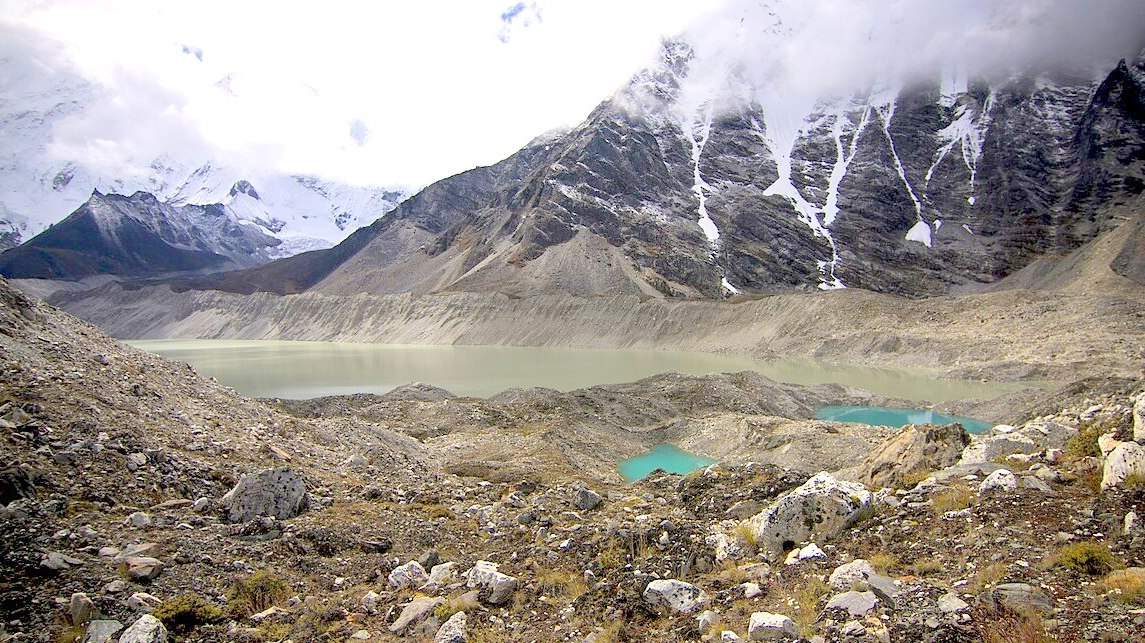
- High Altitude: At 5,010 meters, Imja Tsho is a high-altitude lake, located in the heart of the Everest region.
- Glacial Lake Formation: The lake is a result of melting glaciers and continues to grow due to climate change, making it an important site for environmental studies.
- Island Peak Trek: Imja Tsho is often encountered during the trek to Island Peak (also known as Imja Tse), one of the most popular climbing peaks in the Everest region.
- Impact of Climate Change: Imja Tsho has expanded in recent years due to the retreating glaciers, highlighting the effects of climate change on Nepal's glacial lakes.
- Stunning Views: The lake is surrounded by towering peaks, including Lhotse, Nuptse, and Ama Dablam, offering trekkers breathtaking views of the Himalayas.
- Trekking Routes: The lake is often a stop on treks heading to Everest Base Camp or the Gokyo Lakes trek, offering trekkers a chance to experience high-altitude beauty.
- Sacred Significance: Like many Himalayan glacial lakes in Nepal, Imja Tsho is considered sacred by the local Sherpa community, who regard it as a sacred site.
- Unique Glacial Environment: The surroundings of Imja Tsho feature rugged terrain, glaciers, and rocky landscapes, making it a unique and challenging trek.
- Trekking Adventure: The trek to Imja Tsho offers a combination of physical challenge and scenic beauty, ideal for those looking for a high-altitude adventure.
- Best Trekking Season: The ideal times to visit Imja Tsho are during the spring and autumn seasons, when the weather is clear and the trekking conditions are more favorable.
Imja Tsho is a remarkable glacial lake in the Everest region that offers trekkers the chance to witness the stunning beauty of the Himalayas while also highlighting the impacts of climate change. Whether trekking to Island Peak or as part of the Everest Base Camp trek, Imja Tsho provides a serene and awe-inspiring experience for adventurers. Its crystal-clear waters, surrounded by towering peaks and glaciers, make it one of the most fascinating lakes in Nepal.
Tsho Rolpa (4,580m)
Tsho Rolpa is a stunning glacial lake located in the Dolakha District of Nepal at an elevation of 4,580 meters. It is one of the largest glacial lakes in Nepal and is known for its mesmerizing beauty and the surrounding towering mountains. The lake sits at the base of the Rolwaling Himal, and the trekking route to Tsho Rolpa offers trekkers a perfect combination of natural beauty, serenity, and challenging terrain. Tsho Rolpa is not only a popular trekking destination but also a site of environmental concern, with GLOF (Glacial Lake Outburst Flood) risks due to the increasing size of the lake caused by the melting of glaciers.
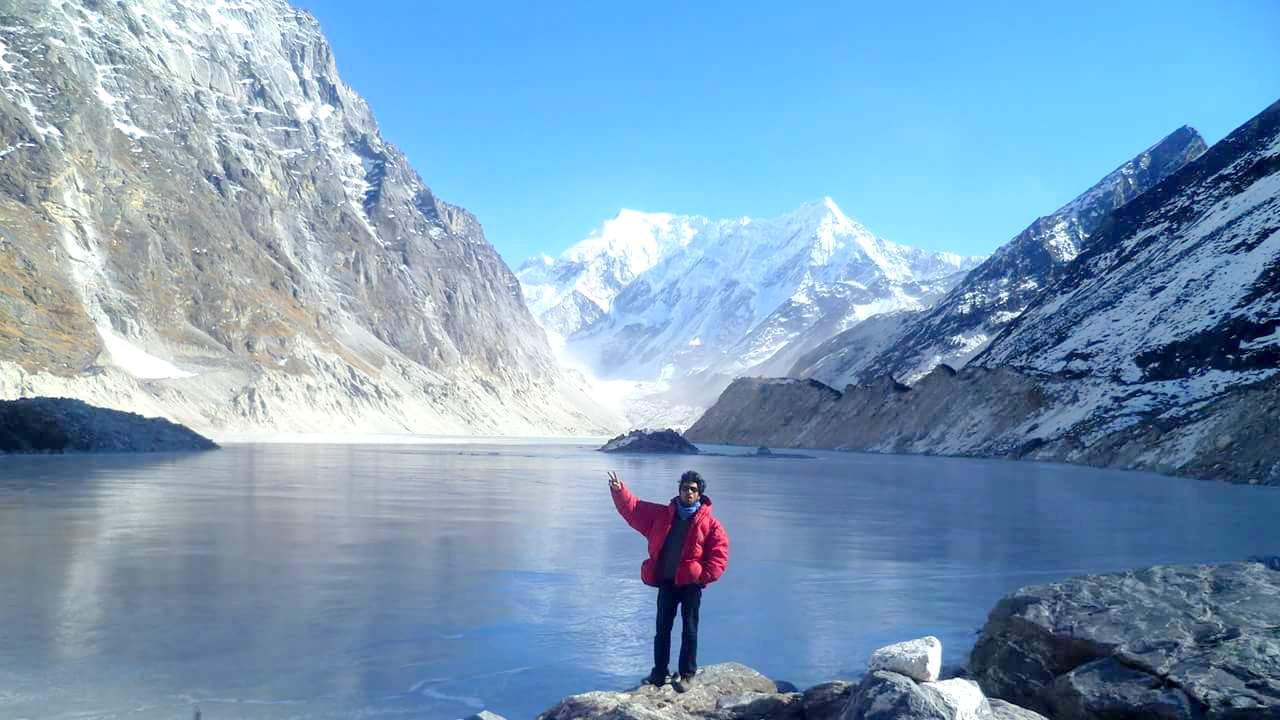
- High Altitude: Tsho Rolpa is situated at an impressive elevation of 4,580 meters, making it one of the highest lakes in Nepal.
- Glacial Lake: The lake is a glacial lake, fed by the melting glaciers of the Rolwaling Himal, and is one of the most significant lakes in the region.
- Environmental Concerns: Tsho Rolpa is known for its increasing size, raising concerns about GLOF (Glacial Lake Outburst Flood) risks in the surrounding communities.
- Trekking Destination: The Tsho Rolpa trek is a popular route for trekkers seeking an adventure in a less crowded region, offering incredible views of the surrounding peaks.
- Stunning Views: The lake is surrounded by rugged mountains, including Gauri Sankar and Langtang Lirung, offering trekkers spectacular mountain vistas.
- Sacred Significance: Like many other lakes in the Himalayas, Tsho Rolpa holds sacred significance for the local people, especially for the Tamang and Sherpa communities.
- Remote and Serene: The trek to Tsho Rolpa passes through remote villages and alpine forests, making it a peaceful and less-traveled alternative to other more popular treks.
- Unique Flora and Fauna: The route to Tsho Rolpa offers trekkers a chance to encounter a variety of Himalayan flora and fauna, including species like the red panda and Himalayan tahr.
- Challenging Terrain: The trek to the lake involves traversing rocky paths, forests, and high-altitude terrain, making it suitable for experienced trekkers seeking a challenge.
- Best Time to Trek: The best time to visit Tsho Rolpa is during the spring and autumn seasons when the weather is clear, and the trekking conditions are ideal.
Tsho Rolpa is a beautiful glacial lake located in the remote regions of the Rolwaling Himal in Nepal. The trek to this lake offers trekkers an opportunity to experience breathtaking mountain views, a remote and peaceful environment, and the chance to explore one of the most stunning Himalayan glacial lakes in Nepal. With its environmental importance and beauty, Tsho Rolpa continues to attract trekkers and nature enthusiasts looking for a truly unique high-altitude adventure. Whether you're seeking serenity or a challenging trekking route, Tsho Rolpa offers a memorable experience.
Rara Lake (2,990m)
Rara Lake, located in the northwestern region of Nepal at an elevation of 2,990 meters, is the largest lake in Nepal. This stunning glacial lake is nestled within the Rara National Park in the Mugu District, surrounded by majestic mountains and lush forests. Known for its crystal-clear blue waters and serene surroundings, Rara Lake is a hidden gem in Nepal’s trekking landscape. Unlike other high-altitude lakes, Rara Lake sits at a relatively lower elevation, making it more accessible while still offering trekkers the chance to experience the beauty of the Himalayas in a tranquil, remote setting.
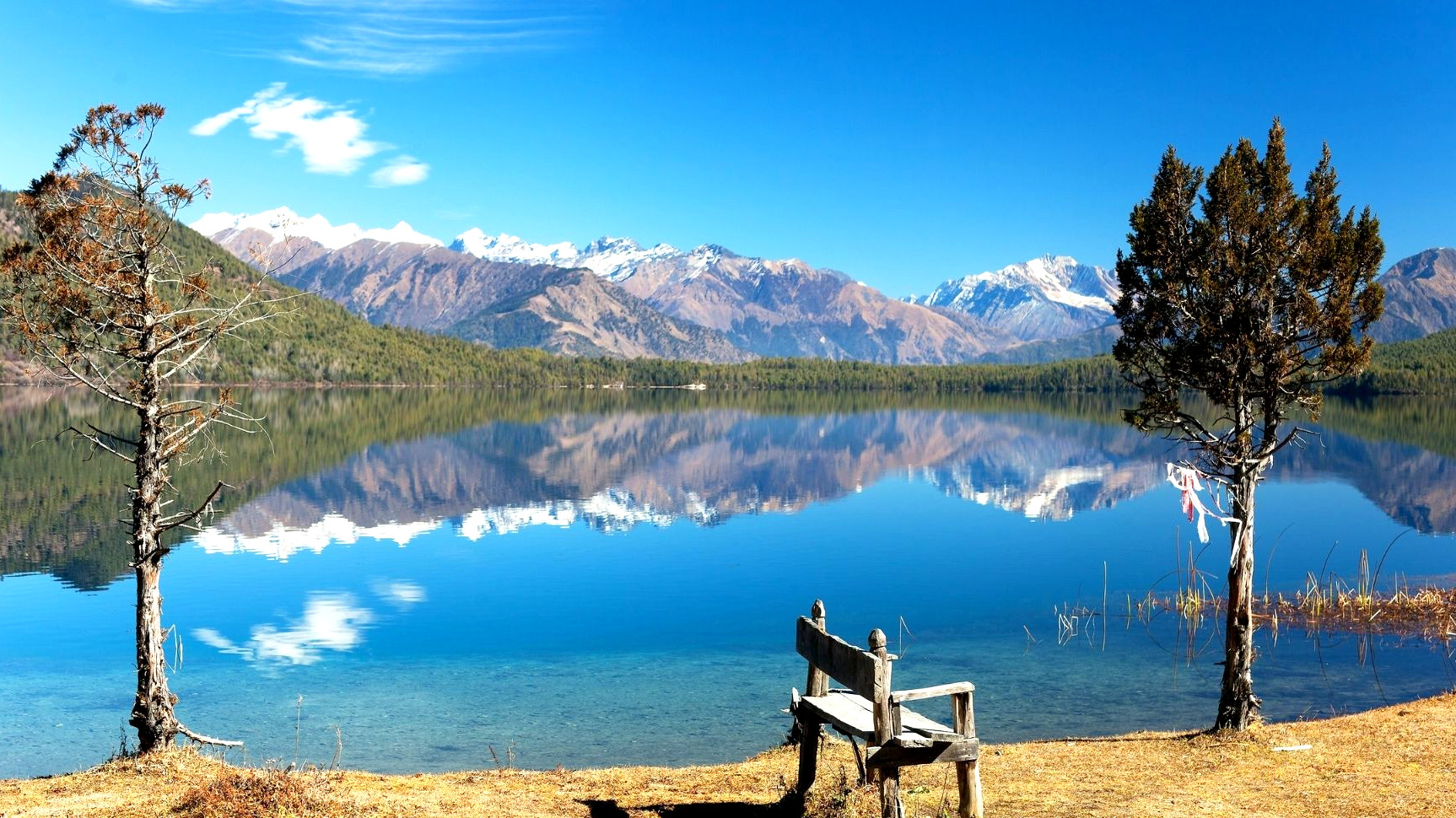
- Largest Lake in Nepal: Rara Lake is the largest glacial lake in Nepal, covering an area of about 10.8 square kilometers.
- Serene Beauty: The lake’s clear, blue waters surrounded by snow-capped mountains and forests offer one of the most peaceful and picturesque landscapes in Nepal.
- Rara National Park: Located within Rara National Park, the lake is part of a protected area that is home to diverse wildlife, including the Himalayan tahr, red panda, and several species of birds.
- Accessible Trekking Route: The Rara Lake trek is less strenuous compared to high-altitude treks, making it a more accessible option for trekkers of varying skill levels.
- Cultural Richness: The trek to Rara Lake passes through small villages where trekkers can experience the traditional lifestyle of the local people, primarily the Tibetan and Chhetri communities.
- Hiking and Nature Exploration: Rara Lake and its surroundings offer ample opportunities for hiking, wildlife watching, and nature exploration, with stunning views of the snow-capped peaks and alpine forests.
- Best Time to Visit: The ideal times to visit Rara Lake are during the autumn (September to November) and spring (March to May) when the weather is clear, and the views are unobstructed.
- Low Altitude Trek: At 2,990 meters, Rara Lake is at a relatively lower elevation compared to other famous glacial lakes in Nepal, offering a gentler trekking experience.
- Sacred Lake: Like many other Himalayan lakes, Rara Lake holds cultural and spiritual significance for the local people, who regard it as sacred.
- Pristine Environment: The area around Rara Lake remains unspoiled by large-scale tourism, offering trekkers the chance to experience the natural beauty of Nepal in its most pristine form.
Rara Lake is a breathtaking destination that combines natural beauty, cultural richness, and serene landscapes. As the largest glacial lake in Nepal, it offers trekkers a unique opportunity to explore one of the most picturesque and tranquil areas of the country. The trek to Rara Lake is a more accessible high-altitude adventure, perfect for those looking to experience the peaceful and pristine beauty of Nepal’s remote regions. With its crystal-clear waters, surrounding snow-capped mountains, and the opportunity to immerse oneself in local culture, Rara Lake is truly a must-visit for nature lovers and adventurers alike.
Phoksundo Lake (3,611m)
Phoksundo Lake, located in the Dolpa District of northwestern Nepal, is a stunning glacial lake situated at an altitude of 3,611 meters. Known for its striking turquoise-blue color, Phoksundo Lake is one of the most beautiful high-altitude lakes in Nepal. The lake is nestled within the Shey Phoksundo National Park, which is home to diverse wildlife and pristine landscapes. Phoksundo Lake is also a significant spiritual site for the local Tibetan communities, who regard it as sacred. Its crystal-clear waters, dramatic landscapes, and remote location make it a popular trekking destination for those looking to explore Nepal’s less-traveled regions.
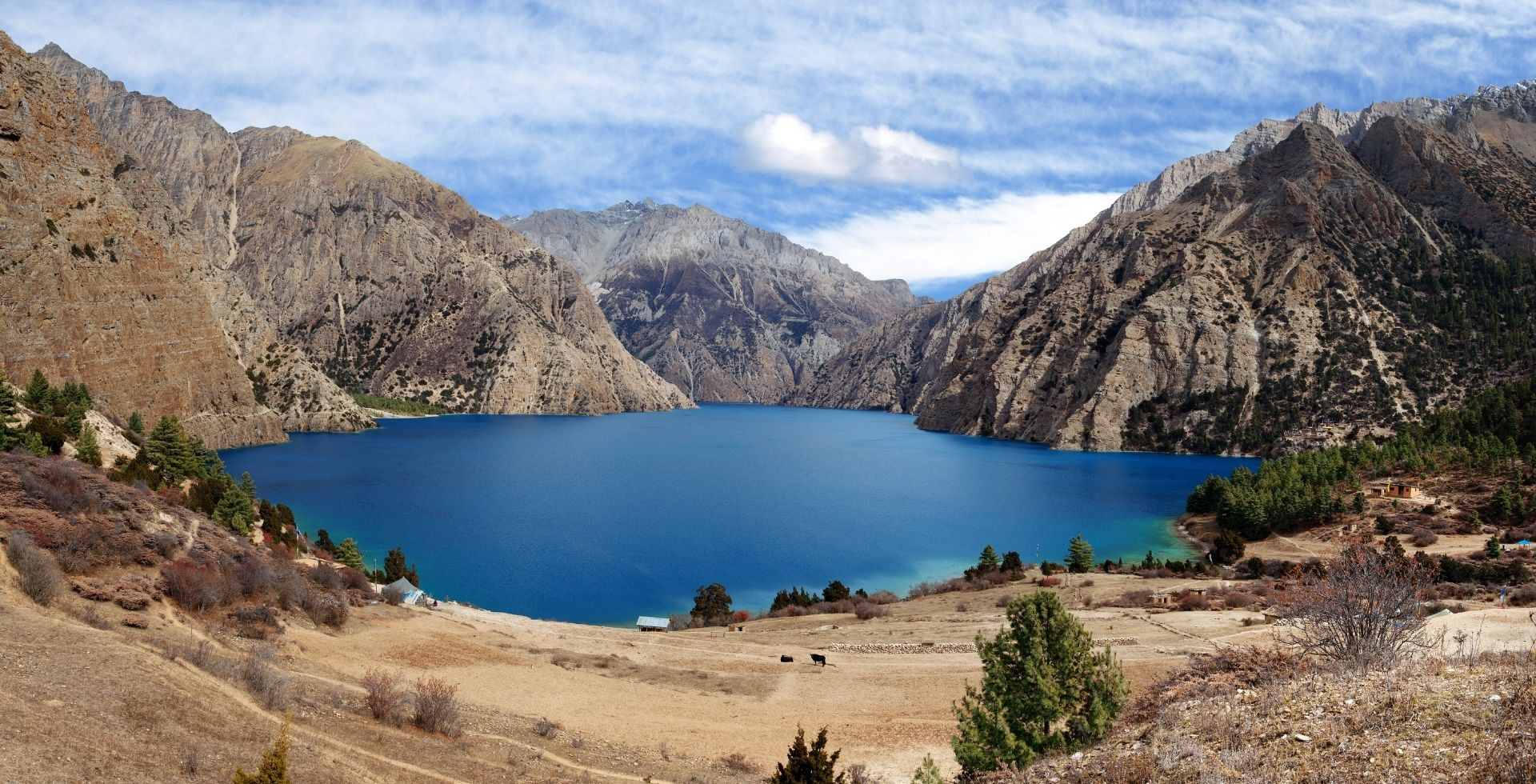
- Striking Blue Waters: Phoksundo Lake is renowned for its deep turquoise-blue color, which is a result of the high mineral content and the surrounding glacial waters.
- High-Altitude Location: At 3,611 meters, Phoksundo Lake is considered a high-altitude lake, offering trekkers a challenging yet rewarding journey.
- Shey Phoksundo National Park: The lake is situated in Shey Phoksundo National Park, which is home to rare wildlife species such as the Himalayan tahr, blue sheep, and the snow leopard.
- Trekking Destination: The Phoksundo Lake trek is a popular trail that takes trekkers through remote villages, lush forests, and rugged mountain terrain, offering stunning views along the way.
- Sacred Lake: Phoksundo Lake is sacred to the local Tibetan-Buddhist communities, and the area is home to several ancient monasteries and spiritual sites.
- Remote and Pristine: Located in a remote region of Nepal, Phoksundo Lake offers a pristine environment, with minimal tourism and unspoiled natural beauty.
- Scenic Trekking Routes: The trek to Phoksundo Lake passes through beautiful landscapes, including pine forests, waterfalls, and snow-capped mountains, making it a paradise for nature lovers.
- Best Trekking Season: The best times to visit Phoksundo Lake are during the autumn and spring seasons, when the weather is clear, and trekking conditions are ideal.
- Local Culture and Traditions: Along the trek, trekkers have the opportunity to visit traditional Tibetan villages and interact with the locals, learning about their culture and lifestyle.
- Unique Flora and Fauna: The region around Phoksundo Lake is home to unique flora and fauna, with alpine meadows, forests, and rare wildlife making the area ecologically rich and diverse.
Phoksundo Lake is a stunning gem in the Himalayas, offering trekkers a chance to experience Nepal’s remote wilderness and beauty. With its mesmerizing turquoise waters, rugged landscapes, and cultural significance, it is one of the most scenic glacial lakes in Nepal. The trek to Phoksundo Lake takes visitors through diverse terrain, from forests to high-altitude meadows, and provides an authentic experience of Tibetan culture and spirituality. Whether you are seeking adventure, tranquility, or cultural immersion, Phoksundo Lake is a must-visit destination in Nepal.
Panch Pokhari (4,100m)
Panch Pokhari, located at an elevation of 4,100 meters in the Sindhupalchok District of Nepal, is a sacred group of five glacial lakes that hold great religious significance for the local communities. Nestled in the Langtang National Park, Panch Pokhari is a remote and serene destination, offering trekkers stunning views of the Langtang Himal and the surrounding alpine landscapes. This high-altitude lake trek is one of Nepal’s lesser-known but equally beautiful treks, known for its natural beauty, peaceful environment, and the spiritual significance of the lakes to the local Tibetan and Buddhist communities.
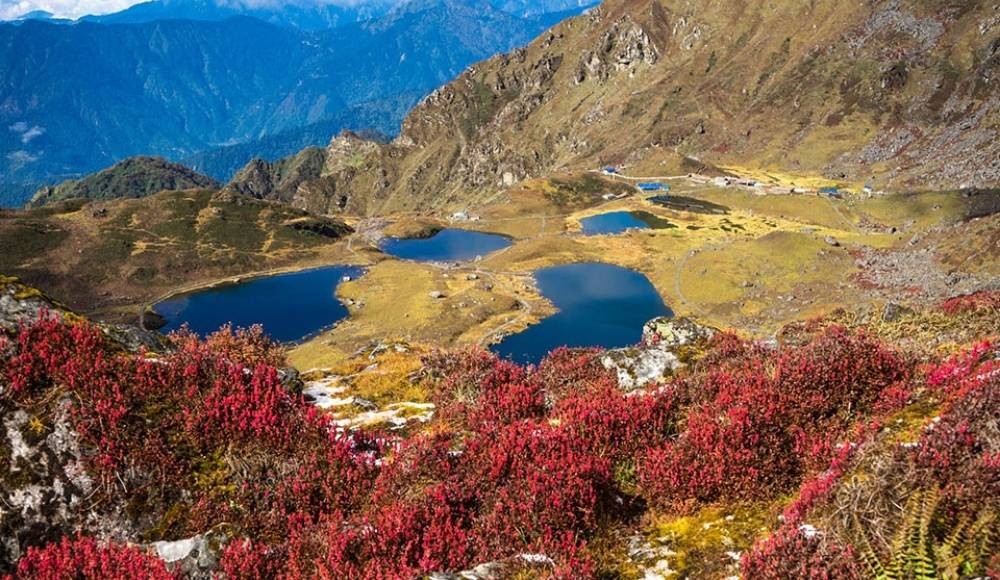
- Sacred Glacial Lakes: Panch Pokhari is made up of five sacred glacial lakes, each with its own religious significance to the local people, particularly during the Janai Purnima festival.
- High-Altitude Trek: At an elevation of 4,100 meters, the lakes are located in a high-altitude region, offering trekkers a challenging yet rewarding journey.
- Langtang National Park: The trek to Panch Pokhari passes through the beautiful Langtang National Park, home to a rich diversity of wildlife, including red pandas, Himalayan tahr, and various species of birds.
- Scenic Beauty: The area is known for its picturesque landscapes, with stunning views of the Langtang Himal, Jugal Himal, and the surrounding valleys.
- Remote and Peaceful: As one of the less-visited trekking destinations, Panch Pokhari offers a tranquil experience, far from the crowds of more popular trekking routes.
- Cultural Significance: The lakes are of great cultural importance, and many trekkers visit Panch Pokhari to participate in religious ceremonies or to immerse themselves in the local Buddhist and Tibetan traditions.
- Spectacular Sunrises: The early mornings at Panch Pokhari offer stunning sunrises over the snow-capped peaks, making it a photographer’s paradise.
- Natural Hot Springs: The area is also known for its natural hot springs, where trekkers can relax after a long day of trekking.
- Flora and Fauna: The trek offers the chance to explore a variety of Himalayan flora and fauna, including alpine meadows and forests that are home to a range of species.
- Best Time to Visit: The best times to trek to Panch Pokhari are during the spring and autumn seasons, when the weather is clear, and the trekking conditions are ideal.
Panch Pokhari is a hidden gem in the Langtang National Park, offering trekkers a unique combination of natural beauty, spiritual significance, and serenity. With its five sacred lakes, stunning views of the Langtang Himal, and remote location, it is an ideal destination for those seeking an off-the-beaten-path trekking experience in Nepal. Whether you're interested in trekking, spiritual exploration, or simply enjoying the peaceful environment, Panch Pokhari is a must-visit destination for any nature lover or adventurer.
Best time to visit the Glacial lakes of Nepal
The glacial lakes of Nepal are some of the most breathtaking destinations for trekkers and nature enthusiasts. To experience the beauty of these lakes in their full glory, it is essential to plan your visit during the right time. The best time to visit the glacial lakes in Nepal is during the autumn and spring seasons, when the weather is generally clear, and the trekking conditions are ideal.
Autumn (September to November):
- Clear Skies and Stable Weather: The autumn season offers the clearest skies and stable weather, providing perfect conditions for trekking to the glacial lakes of Nepal.
- Optimal Temperature: Temperatures during the day are pleasant, and the nights are chilly but not freezing, making it an ideal time for trekking in higher altitudes.
- Spectacular Views: The surrounding mountains and landscapes are often free of clouds, allowing trekkers to enjoy unobstructed views of the Himalayan peaks and glacial lakes like Tilicho Lake, Gokyo Lakes, and Rara Lake.
- Festivals and Cultural Events: During autumn, several cultural and religious festivals are celebrated in Nepal, adding a unique cultural experience to your trek.
Spring (March to May):
- Mild Temperatures: Spring brings mild temperatures, making it a comfortable season for trekking in higher altitudes, especially to lakes like Imja Tsho and Phoksundo Lake.
- Flourishing Flora: The spring season is also the time when Nepal’s flora comes to life, and trekkers can enjoy lush green landscapes and blooming wildflowers along the trekking routes to the glacial lakes.
- Less Crowded: Spring offers slightly fewer trekkers compared to autumn, which means more peaceful trekking experiences in popular glacial lake destinations like Gokyo Lakes trek and Tsho Rolpa Lake Nepal.
- Clear Weather: Weather conditions during the spring are mostly clear, with occasional light rainfall, which is perfect for trekking through regions like Panch Pokhari and the Langtang Valley to visit sacred lakes.
Avoiding the Monsoon Season (June to August):
- Heavy Rainfall: The monsoon season in Nepal brings heavy rainfall, making trekking conditions challenging and risky, especially around high-altitude glacial lakes.
- Risk of Landslides and Flooding: The trails leading to the glacial lakes can be slippery and prone to landslides during this period, making trekking dangerous.
- Limited Visibility: Frequent cloud cover and rain can obscure the magnificent views of the glacial lakes, reducing the overall experience of visiting these stunning natural wonders.
Winter (December to February):
- Cold Weather: The winter season brings freezing temperatures, particularly in high-altitude regions, which can make trekking uncomfortable or even dangerous for many trekkers.
- Snow-Covered Trails: While the snow-covered landscape can be beautiful, trekking to some of the glacial lakes, especially those at higher elevations like Gokyo Lakes and Tilicho Lake, can be challenging due to deep snow and icy conditions.
- Less Crowded: Winter tends to see fewer trekkers, making the trails less crowded but also less accessible due to extreme cold and potential snowfall.
The best time to visit the glacial lakes of Nepal is during the autumn (September to November) and spring (March to May) seasons, offering ideal weather conditions for trekking, clear skies for panoramic views, and the best trekking experiences. Whether you are trekking to Tilicho Lake, Gokyo Lakes, or the sacred Tsho Rolpa Lake, these seasons provide the perfect environment for you to enjoy Nepal’s natural wonders while avoiding the challenges posed by the monsoon and winter seasons.
Tips for Visiting the Glacial Lakes of Nepal
Visiting the glacial lakes of Nepal is an extraordinary adventure, offering trekkers the chance to explore some of the most stunning natural landscapes on earth. From the serene Tilicho Lake to the sacred Tsho Rolpa, trekking to these high-altitude lakes requires careful planning and preparation. To ensure a safe, enjoyable, and successful journey, here are some essential tips to keep in mind:
- Acclimatize Properly: Since most glacial lakes are located at high altitudes, such as Gokyo Lakes (4,700-5,000m) and Imja Tsho (5,010m), it is crucial to take time to acclimatize to prevent altitude sickness. Plan for rest days along the trek to allow your body to adjust.
- Choose the Right Time to Visit: The best seasons to visit the glacial lakes of Nepal are autumn (September to November) and spring (March to May), as these offer clear skies and moderate temperatures. Avoid the monsoon season (June to August) due to heavy rainfall and the winter months (December to February) due to freezing temperatures.
- Pack Proper Gear: Pack high-quality trekking gear, including thermal clothing, a sturdy pair of hiking boots, and warm layers. Don’t forget sunglasses, a waterproof jacket, and a good sleeping bag, especially if you are trekking to higher altitudes like Tilicho Lake and Gokyo Ri viewpoint Everest.
- Stay Hydrated and Nourished: Trekking at high altitudes can be demanding, so it’s important to stay hydrated and nourished. Carry sufficient water and energy-rich snacks, such as energy bars, dried fruits, and nuts to keep your energy levels up throughout the trek.
- Hire a Local Guide: Hiring a local guide is highly recommended when trekking to Nepal’s glacial lakes, especially in remote areas. A guide can provide valuable insight into the cultural significance of lakes like Rara Lake Nepal and help navigate the rugged terrain.
- Take It Slow: When trekking to high-altitude lakes like Panch Pokhari and Imja Tsho glacial lake, take your time and walk slowly to reduce the risk of altitude sickness. Don’t rush and enjoy the beauty of the landscape along the way.
- Carry a First Aid Kit: Always carry a first aid kit containing essentials like pain relievers, bandages, anti-diarrheal medications, and anti-altitude sickness pills. It’s better to be prepared in case of emergencies during your trek.
- Be Prepared for Cold Nights: Even in the warmer months, temperatures at high altitudes can drop significantly at night. Be sure to pack warm layers, including a down jacket and gloves, to stay comfortable while camping or staying in teahouses.
- Respect Local Culture: Many of the glacial lakes in Nepal are considered sacred by local communities. Show respect for local customs and traditions, especially at spiritual lakes like Panch Pokhari and Tsho Rolpa Lake Nepal. Always ask for permission before taking photos or interacting with religious sites.
- Stay Informed About Climate Change: Some of the glacial lakes in Nepal are affected by climate change, with GLOF (Glacial Lake Outburst Floods) posing a risk. Stay informed about the conditions of the lakes you plan to visit, especially those in areas prone to these hazards, such as Tsho Rolpa.
Visiting the glacial lakes of Nepal is a rewarding and unforgettable experience, offering both natural beauty and spiritual significance. By following these tips, you can ensure a safe, enjoyable, and memorable journey to some of Nepal’s most stunning high-altitude lakes like Tilicho Lake, Gokyo Lakes, and Rara Lake. Proper preparation, respectful behavior, and staying informed about the challenges will help make your adventure smooth and enjoyable.
The glacial lakes of Nepal offer breathtaking natural beauty and spiritual significance, attracting trekkers to stunning destinations like Tilicho Lake, Gokyo Lakes, and Rara Lake. These high-altitude lakes provide a unique adventure amidst the Himalayas, with rich landscapes, diverse wildlife, and cultural importance. To fully enjoy these awe-inspiring spots, proper preparation, including acclimatization, the right gear, and the best trekking seasons, is essential. Visiting the glacial lakes of Nepal is a rewarding journey that offers unforgettable experiences in one of the world’s most beautiful regions.



